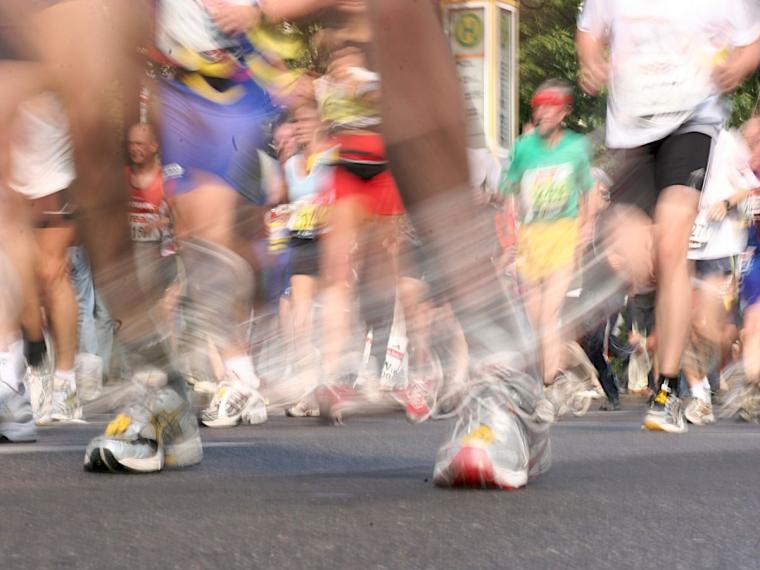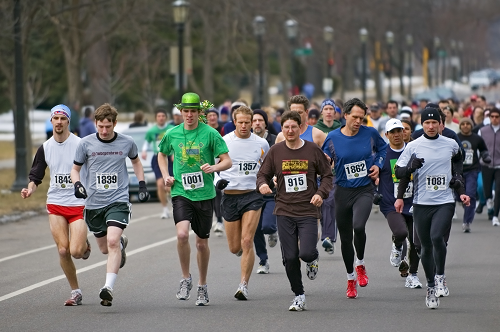

A new survey highlights the biggest challenges facing the road racing events industry heading into 2022. Running USA, the nonprofit trade organization for the sport of road running, has released the results of its 2021 Event Management Study, which documents the increasingly challenging environment in which event producers attempt are operating.
“This study offers a snapshot into the minds of race directors as they work toward industry recovery from the pandemic,” Dawna Stone, CEO of Running USA, said in a statement. “Topics like virtual events, DEI [Diversity, Equity and Inclusion] response and outlook for the industry were added to this year’s study to gain a broad perspective on the current climate for events.”
Among the top challenges for the industry — as reported in the survey by event management professionals from events of all sizes — are growing races, the increasing cost of event production and attracting new participants.
Event expenses have increased dramatically since the last Event Management Study two years ago, according to Running USA, with average expenses for police, marketing, traffic control, event setup and takedown, porta-potties, insurance and signage all more than doubling since the organization last conducted the study two years ago. This year’s survey was conducted in September and October.
While nearly 29 percent of event operators report reduced participation levels due to the pandemic, a majority of respondents still maintained a positive outlook for the industry in 2022, according to the report.
Other industry leaders are optimistic, too. “While pandemic conditions remain a real and going threat to society, we have opportunities to be optimistic and proactive that will allow the running community to continue to rebuild in the coming months,” Jean Knaack, chief executive officer of the Road Runners Club of America, wrote in a quarterly update in October. “For many months now, RRCA members have been able to host events around the country. Those that have enforced reasonable mitigation measures have reported no outbreak occurrences, which tracks with trends and reporting from other live event industries that have employed similar mitigation measures. While there has been an occasional one or two cases of the virus reported to a race director post-event, so far running events have not been reported to be super-spreader events, mainly due [to] good mitigation measures and the good health status of participants.”
Road races and trail events in destinations all over the United States helped set the pace for the return of sports this year. “I think there is going to be a huge running boom,” Jack Murray, chair of the Austin (Texas) Sports Commission’s board of directors and owner of High Five Events with a roster that includes the Ascension Seton Austin Marathon and the 3M Half Marathon, told Sports Destination Management this summer. “The virus has made people think about their health a little bit more. And with running, all you need is a pair of shoes and a heartbeat.”
That said, RRCA’s Knaack notes that “we have a way to go to rebuild consumer confidence and participation, with participation in events as of the end of September at 48% compared to the numbers we tallied in 2019. … [W]e are optimistic that the running community is headed in the right direction as we head into 2022. The continued use of health measures coupled with rebuilding consumer confidence in live-event participation will be critical to ensuring a full recovery by this time next year.”
In late October, USA Track & Field updated its “logistical information and guidance for event directors and local organizing committees,” including the section on cross country, road races, race walks, and mountain/ultra/trail events.
Earlier this year, Running USA issued guidelines developed to help race organizers reduce the likelihood of virus transmission among event participants, volunteers, staff members and communities at large. The 15-page “Return to Racing: Guidance on SARS-CoV-2 transmission risk mitigation during running events” document was written by Dr. Brooke Nichols, an assistant professor in the Department of Global Health at Boston University’s School of Public Health, who noted that “it is possible to continue racing while minimizing transmission risk.”
Running USA’s 2021 Event Management Study — which includes “summary event data, expectations, stresses and projections for the year ahead” — is intended for event operators and other professionals seeking to assess their performance against industry benchmarks, and it can be purchased here.

